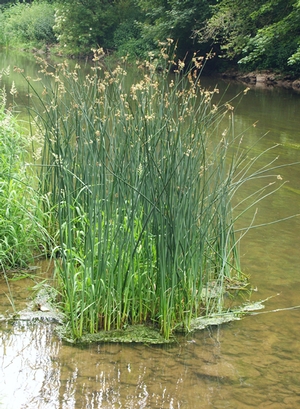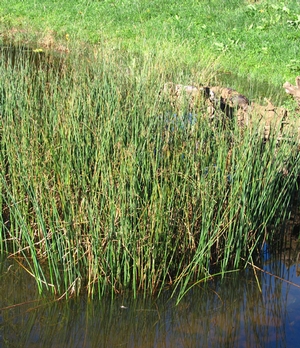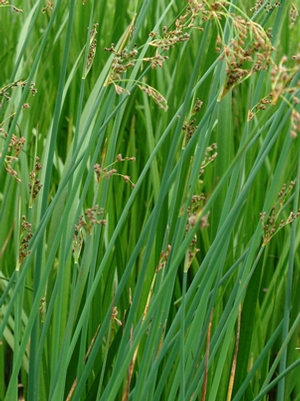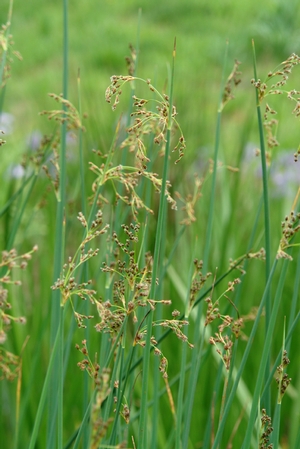Scirpus validus
Common: softstem bulrushScirpus validus LP50 - 50 per flat
- Height: 6'-8'
- Spread: 4'-5'
- Spacing: 18"-24"
- Hardiness Zone(s): 3-9


Scirpus validus LP50 - 50 per flat



Obligate wetland plant for inland shallow waters, non-tidal marshes and wildlife. Large triangular dark green stems with brownish inflorescences hang pendulously from spring to fall. Stems are unusually spongy. Emergent aquatic.
Found in wet ditches, mudflats and swamps. Prefers moist to wet, peaty, sandy soils in full sun, but is quite tolerant of saline and alkaline soils. Propagate by seed or division in spring. Best used for erosion control, and next to ponds or streambeds.
Scirpus validus is an obligate wetland plant for inland shallow waters, non-tidal marshes, and wildlife. It is an upright, spreading marsh grass with large triangular dark green stems with brownish inflorescences hanging pendulously from spring to fall. The stems are unusually spongy and grow 5-6’ tall and up to 4’ wide. This emergent aquatic does best if planted where it’s rhizomes can spread freely among plants of a similar competitive nature.
Scirpus validus grows in saturated soils in full sun to part sun such as in marshes, along lake and stream shores, and in wet meadows. It is reported to thrive in alkaline soils or waters with varying salinity levels. Softstem bulrush seems to grow better in saline conditions than in fresh water, and it tolerates a wide range of salinity. Softstem bulrush spreads by seed or by rhizome – the plant should be sited where it may spread freely. Scirpus spp. are one of the first plants to colonize wetland areas and provide essential erosion control as they tolerate buffets of wind and waves which allows for other species that need quieter waters to establish.
Scirpus spp. are an essential plant for wetland life. Seeds provide food for birds, emergent foliage provides habitat and forage, and roots provide food for wetland mammals. It is a larval host for the Dion Skipper. It is best used in naturalized areas, and next to ponds or streambeds where it can take shallow waters and periods of inundation.